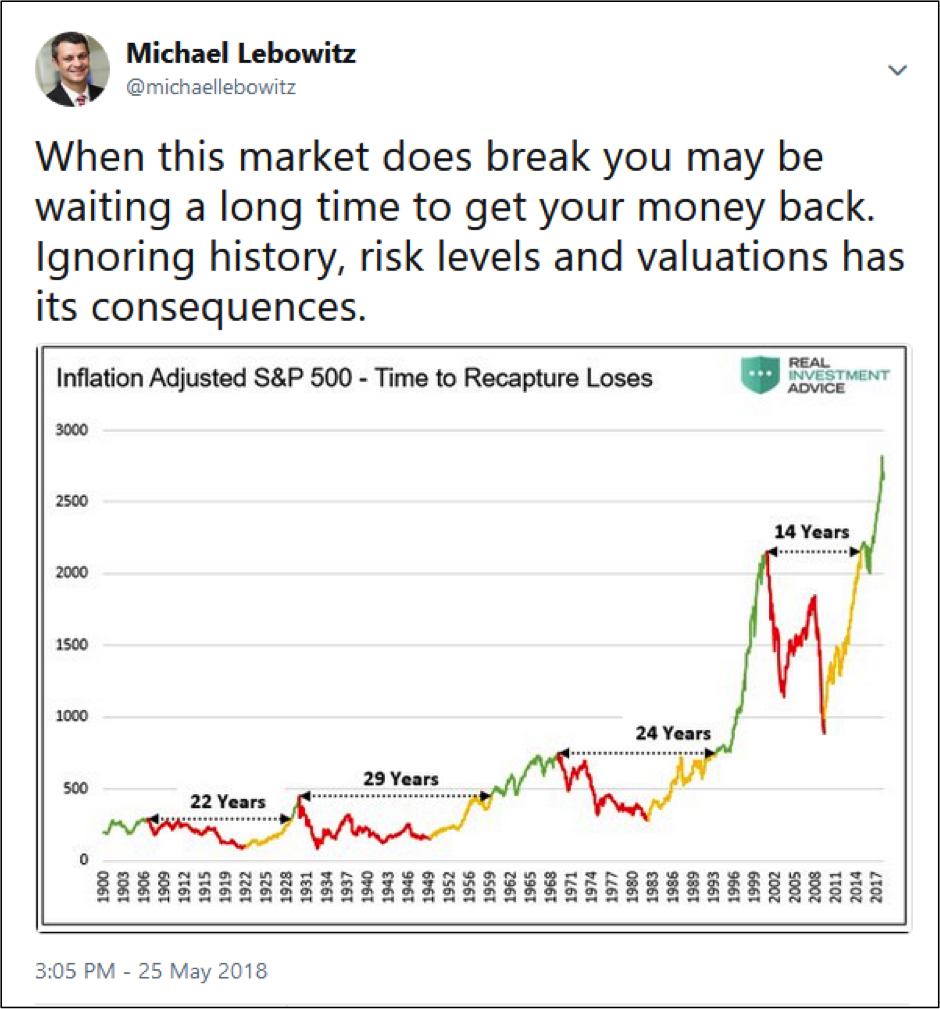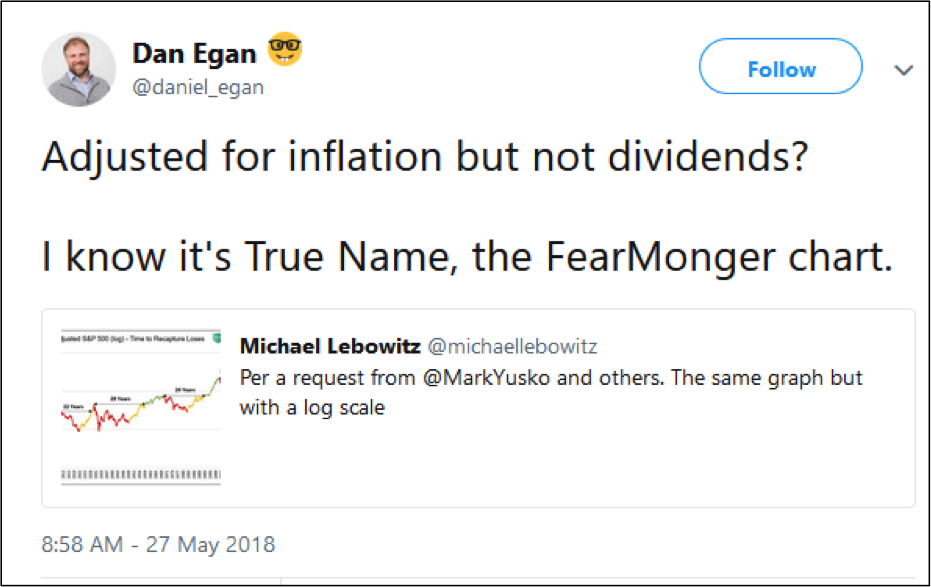This post was written together with Lance Roberts and John Coumarianos from Real Investment Advice.
This article is Part I of a series discussing the fallacies of always owning stocks for the long run (aka buy and hold strategies).
Given that the current bull market is not only long in the tooth compared to prior bull markets, but sitting at valuations that have always been metwith severe declines, we believe the points made in this article and series of upcoming articles are important for investors to understand.
This series of articles will cover the followingkey points:
- “Buy and Hold,”and other passive strategies are fine, just not all of the time
- Markets go through long periods where investors are losing money or simply getting back to even
- The sequence of returns is far more important than the average of returns
- “Time horizons” are vastly underappreciated.
- Portfolio duration, investor duration, andrisk tolerance should be aligned.
- The “value of compounding”only works when large losses are not incurred.
- There are periods when risk-free Treasury bonds offer expected returns on par, or better than equities with significantly less risk.
- Investor psychology plays an enormous role in investors’ returns
- Active management provides a way to reduce portfolio risk and minimize losses to maximize the value of time and compounding
Part 1 – Buy and Hold Can Be Hazardous To Your Wealth
One would think that following two major market corrections of over 50% within the last two decades, investors would have a better appreciation for how much time it takes to compound your way out of losses. While buy-and-hold investors who stayed true to their strategy over the last two decades are indeed ahead, they lost many years of valuable compounding time in a quest to “get back to even.”
Just recently, Michael Lebowitz tweeted a chart that highlighted the issue of the time required to “get back to even.”
The tweet and graph was a simple reminder that markets spend a good deal of time declining and retracing those declines. These are long periods when investors are not compounding their wealth. As he noted this fact should be top of mind given “history, risk levels, andvaluations.”
Not surprisingly, his tweet quickly sparked rebuttal from some promoters of “buy and hold”investment strategies. Of note was a Tweet from Dan Egan.
Dan thinks that Michael’s message is “Fear Mongering.” If presenting factual data and highlighting the certainty of market cycles is fear mongering then maybe he is right. If so, he might also want to consider that investors should be fearful given current valuations and the economic underpinnings of corporate earnings. If fear is what it takes to help investors understand the next five years will likely not be similar to the last five,then it will have served a valuable purpose.
This message seems lost on many investment professionals and individuals because:
- They have never been through a major market reversion
- They have only lived through one (2008) and assume another “financial crisis”cannot happenin our lifetimes.
- They find it easier to passively manage money and blame major drawdowns on the markets rather than commit to the efforts, rigorous analysis, and mental fortitude to go against the crowd. These are all important traits needed to manage an active investment strategy.
As David Rosenberg recently noted, since 2009 nearly 13.4 million individuals have taken on roles in the financial industry. What this suggests, is there are many professionals currently promoting a “buy-and-hold”strategy who have never actually been through a “bear market” cycle. Even Dan Egan who quickly dismissed the analysisdid not start with Betterment until after the financial crisis.
continue reading on the next page…








